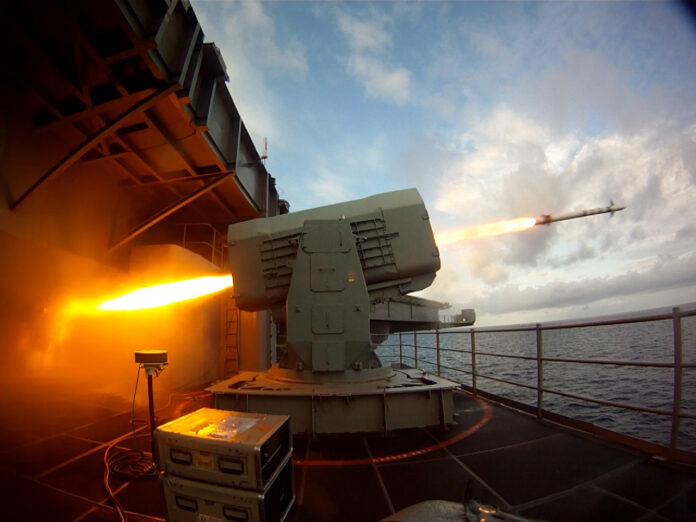Raytheon Missiles and Defense, Tucson, Arizona, is awarded a $130,019,155 firm-fixed-price modification to previously-awarded contract to exercise options for fiscal 2021 for the Rolling Airframe Missile Block 2/2A Guided Missile Round Pack, spare replacement components, and recertification.
This contract combines purchases for the U.S. government (66%); and the governments of Japan, Turkey and United Arab Emirates (34% combined) under the Foreign Military Sales (FMS) program.
The work is expected to be completed by March 2024. Fiscal 2021 weapons procurement (Navy) funds in the amount of $84,339,000 (65%); FMS Japan funds in the amount of $41,874,000 (32%); Fiscal 2021 operation and maintenance (Navy) funds in the amount of $1,815,763 (1%); FMS United Arab Emirates funds in the amount of $1,743,369 (1%); and FMS Turkey funds in the amount of $247,023 (1%), will be obligated at the time of the award. Funding in the amount of $1,815,763 will expire at the end of the current fiscal year.
The Naval Sea Systems Command, Washington, D.C., is the contracting activity.
RIM-116 Rolling Airframe Missile (RAM)
The RIM-116 Rolling Airframe Missile (RAM) is a small, lightweight, infrared homing surface-to-air missile in use by the German, Japanese, Greek, Turkish, South Korean, Saudi Arabian, Egyptian, Mexican and U.S. Navies. It was intended originally and used primarily as a point-defense weapon against anti-ship cruise missiles. As its name indicates, RAM rolls as it flies. The missile must roll during flight because the RF tracking system uses a two-antenna interferometer that can measure phase interference of the electromagnetic wave in one plane only. The rolling interferometer permits the antennas to look at all planes of incoming energy. In addition, because the missile rolls, only one pair of steering canards is required. As of 2005, it is the only U.S. Navy missile to operate in this manner.
The Rolling Airframe Missiles, together with the Mk 49 Guided Missile Launching System (GMLS) and support equipment, make up the RAM Mk 31 Guided Missile Weapon System (GMWS). The Mk-144 Guided Missile Launcher (GML) unit weighs 5,777 kilograms (12,736 lb) and stores 21 missiles. The original weapon cannot employ its own sensors prior to firing so it must be integrated with a ship’s combat system, which directs the launcher at targets. On U.S. ships it is integrated with the AN/SWY-2 Ship Defense Surface Missile System (SDSMS) and Ship Self-Defense System (SSDS) Mk 1 or Mk 2 based combat systems. SeaRAM, a launcher variant equipped with independent sensors derived from the Vulcan Phalanx CIWS, is being installed on Littoral Combat Ships and certain Arleigh Burke-class destroyers.
Check out Naval Library App to find out the specifications of the RAM Missiles.





